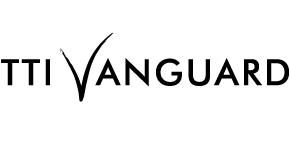TTI/Vanguard Newsletter: December 16, 2022
As 2022 winds down, the TTI/Vanguard team thanks all the speakers, field trip presenters, editorial board members, and especially the attendees—both in person and remote—for making this a great year. We look forward to spending quality time with our members in 2023 in Cambridge, MA (Data, AI, and Robotics; March 14–16), Montreal (Rebooting Computing; June 21–23), the Denver area (Networks and Communications; September 12–14, specifically Westminster), and the Bay Area ([next], December 11–13, specifically Half Moon Bay). Plan to join us and make time for the field trips that will lead into most of the conferences.
Last week’s [next] conference in Scottsdale featured talks on aging (Jennifer Garrison) and on the microbiome (Rosa Krajmalnik-Brown; Sandrine Miller-Montgomery). This article blends the two topics by discussing how the microbiome changes with age and how those changes can potentially foreshadow age-related diseases.
When Roger McNamee (San Jose, Dec 2021; Los Angeles, Mar 2018) wrote this article a month ago about Twitter’s devolution under the leadership of Elon Musk, so much had yet to unfold. Still, the writing was on the wall, and McNamee bemoaned the loss of an important resource for politicians, journalists, and celebrities, who have long relied on the platform to speak directly to their constituencies and audiences. (Patrick Meier, Paris, Jul 2011; San Francisco, Dec 2014) Click here to read the article.
There has never been any doubt that nuclear fusion is possible nor that it can generate net energy; the proof of concept shines down on Earth daily. The great achievement at the U.S. National Ignition Facility at Lawrence Livermore National Lab was the demonstration that humans can harness fusion in the lab—albeit a big lab, with big lasers, and that the energy to power those lasers outdid the energy ultimately generated manyfold. Still, this demonstration of ignition—more energy out than the lasers delivered directly—is a huge proof of concept. Although announced by the White House Dec 13, some key engineering improvements were published mid-November. (Dennis Whyte, San Francisco, Dec 2015; Boston field trip, Apr 2017)
And that’s not the only news in Big Physics of late: This article is entitled “No, physicists didn’t make a real wormhole. What they did was still pretty cool.”—and so it is. As published in Nature, what Fermilab researchers achieved was the use of Google’s quantum computer to simulate the pared-down problem of a traversable two-dimensional wormhole by designing a quantum circuit mathematically equivalent to a “baby wormhole” to demonstrate holographic duality, thereby experimentally linking a gravitational wormhole with quantum entanglement.
Generative AI models akin to one Aditya Ramesh (Washington, D.C., Sep 2022) described for DALL-E 2 are being used to generate precise designs for novel protein structures. (Seth Cooper, Chicago, May 2011; Rhiju Das, San Jose, Feb 2012) Click here to read the article.
And, speaking of DALL-E and generative AI’s penchant for creating imagery in the mode of particular artists or genres of art, this Washington Post article explores various sides of the issue of AI art, using the creations of the Lensa app as a case study. (Alex Reben, San Francisco, Dec 2019)
And, in a blend of computer-based simulation and generative AI, deep learning researcher Jonas Degraveplayed around with ChatGPT by coaxing it to simulate a Linux terminal. While this wasn’t a true virtual machine, he was able to “gain access to a complete Linux virtual machine within the model’s synthetic imagination.” (Oren Etzioni, virtual conference, Jul 2021
“ChatGPT, as currently conceived, is a parlor trick. It’s something that isn’t actually itself going to solve what people need, unless what they need is sort of a distraction.”—Bern Elliot
